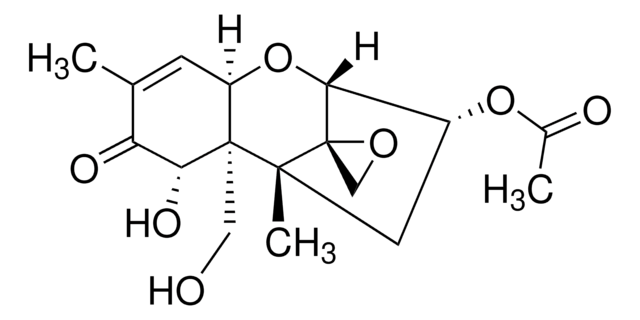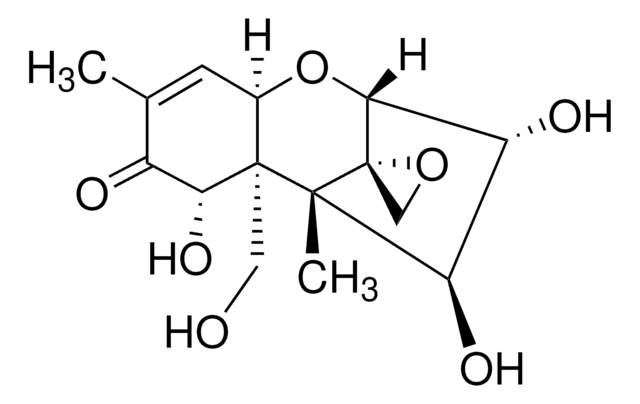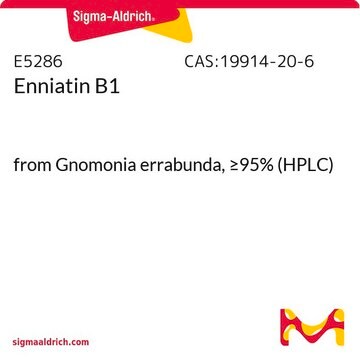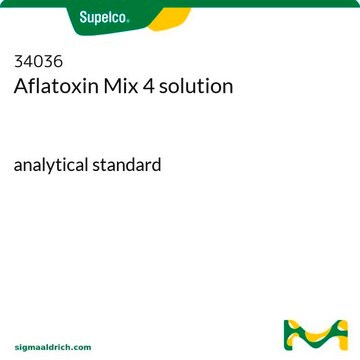A1556
15-O-Acetyl-4-deoxynivalenol from Fusarium graminearum
Synonim(y):
15-Acetoxy-3α,7α-dihydroxy-12,13-epoxytrichothec-9-en-8-one
About This Item
Polecane produkty
Postać
powder
Poziom jakości
temp. przechowywania
2-8°C
ciąg SMILES
CC(=O)OC[C@]12[C@H](O)C(=O)C(C)=C[C@H]1O[C@@H]3[C@H](O)C[C@@]2(C)[C@]34CO4
InChI
1S/C17H22O7/c1-8-4-11-16(6-22-9(2)18,13(21)12(8)20)15(3)5-10(19)14(24-11)17(15)7-23-17/h4,10-11,13-14,19,21H,5-7H2,1-3H3/t10-,11-,13-,14-,15-,16-,17+/m1/s1
Klucz InChI
IDGRYIRJIFKTAN-HTJQZXIKSA-N
Szukasz podobnych produktów? Odwiedź Przewodnik dotyczący porównywania produktów
Opis ogólny
Zastosowanie
Działania biochem./fizjol.
Hasło ostrzegawcze
Danger
Zwroty wskazujące rodzaj zagrożenia
Zwroty wskazujące środki ostrożności
Klasyfikacja zagrożeń
Acute Tox. 2 Oral - Acute Tox. 3 Dermal - Acute Tox. 3 Inhalation
Kod klasy składowania
6.1A - Combustible acute toxic Cat. 1 and 2 / very toxic hazardous materials
Klasa zagrożenia wodnego (WGK)
WGK 3
Temperatura zapłonu (°F)
Not applicable
Temperatura zapłonu (°C)
Not applicable
Środki ochrony indywidualnej
Eyeshields, Faceshields, Gloves, type P2 (EN 143) respirator cartridges
Certyfikaty analizy (CoA)
Poszukaj Certyfikaty analizy (CoA), wpisując numer partii/serii produktów. Numery serii i partii można znaleźć na etykiecie produktu po słowach „seria” lub „partia”.
Masz już ten produkt?
Dokumenty związane z niedawno zakupionymi produktami zostały zamieszczone w Bibliotece dokumentów.
Klienci oglądali również te produkty
Nasz zespół naukowców ma doświadczenie we wszystkich obszarach badań, w tym w naukach przyrodniczych, materiałoznawstwie, syntezie chemicznej, chromatografii, analityce i wielu innych dziedzinach.
Skontaktuj się z zespołem ds. pomocy technicznej













